
Amaranth flour is derived from the seeds of the amaranth plant. This type of flour is typically seen in health food stores, but some regular food stores carry it as well. It has grown in popularity because it is gluten-free, and many individuals who cannot have gluten cook with this type of flour for its health benefits.
History
Amaranth plants are ancient plants that originated in the Americas, says the Alternative Field Crops Manual. They also grow in Mexico, Eastern Africa, Central America, India, Nepal and China. The Manual also states that amaranth growth was at its peak during Aztec civilization in Mexico. The United States started growing the grain in the 1970s, according to jeffersoninstitute.org, and it is only grown on several thousand acres in the country. Amaranth is drought-tolerant, which is beneficial and helps with grain production.
Types
Amaranth flour is derived from several types of amaranth plants. There are three species of amaranth grain plants, says jeffersoninstitute.com: Amaranthus hypochondriacus is the most commonly grown species, Amaranthus cruentus is minimally grown, and Amaranthus caudatus is the third type. Other species of amaranth plants do not produce grain, but are weeds and other plants. A common feature of amaranth grain plants is a crimson color.
Function
The most common use of amaranth grain is grinding it into flour, says the Alternative Field Crops Manual. The grain can also be popped in a similar way to popcorn or used as flakes. The flour is commonly used in cereals, pastas, pancakes, crackers, breads, cookies and other baked goods, and can be combined with other types of flours. If used in bread, the flour needs to be combined with another type of flour in order for the bread to rise; for non-rising breads like biscuits, amaranth flour can be used alone.
Features
Amaranth flour is very high in protein, fiber and lysine, an essential amino acid. According to usaemergencysupply.com, only 150 grams of amaranth provides an adult with 150 percent of the daily recommended protein intake. The grain is also high in phytosterols, which help prevent disease, says usaemergencysupply.com. For gluten-sensitive or gluten-intolerant individuals, amaranth is a good flour with which to cook, since it is gluten-free.
Warning
Eating raw amaranth grains or flour can prevent the body from absorbing nutrients, according to versagrain.com. Amaranth should always be cooked before eating. To keep it fresh in storage, recipetips.com recommends keeping the flour in a tightly sealed container in a refrigerator or freezer; it will be usable for approximately six months if kept under these conditions.
Related Articles

Does Flour Spoil?

Is Teff Flour Gluten-Free?
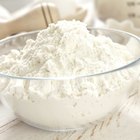
How to Store Flour
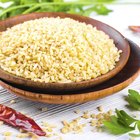
Bulgur Vs. Farro

Does Flour Expire?

What Additives Are in Flour?

Does it Help to Keep Flour in the ...
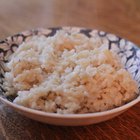
How to Cook Brown Basmati Rice
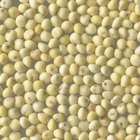
How to Cook Millet Meal

How to Use Millet Flour

What Is Stone-Ground Wheat?

Chemicals in Enriched Flour
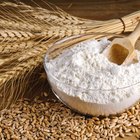
Differences Between Bleached Flour & ...

Uses of Cassava Flour

How to Make Pumpernickel Flour
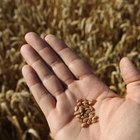
How Is Wheat Processed?

Alternative Flours to Make Pizza

Does Flour Get Old or Go Bad?
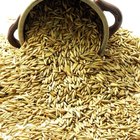
How to Store Oat Bran

Fiber in Soybeans
References
Writer Bio
Jaime Herndon has been writing for health websites since 2009 and has guest-blogged on SheKnows. After graduating with a Bachelor of Arts in psychology and women's studies, she earned a Master of Science in clinical health psychology and a Master of Public Health in maternal-child health. Her interests include oncology, women's health and exercise science.
Photo Credits
Zoonar/j.wnuk/Zoonar/Getty Images